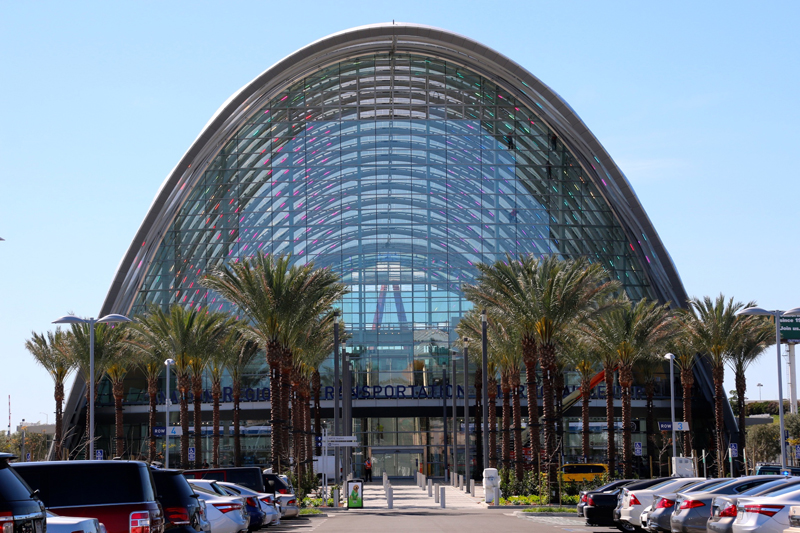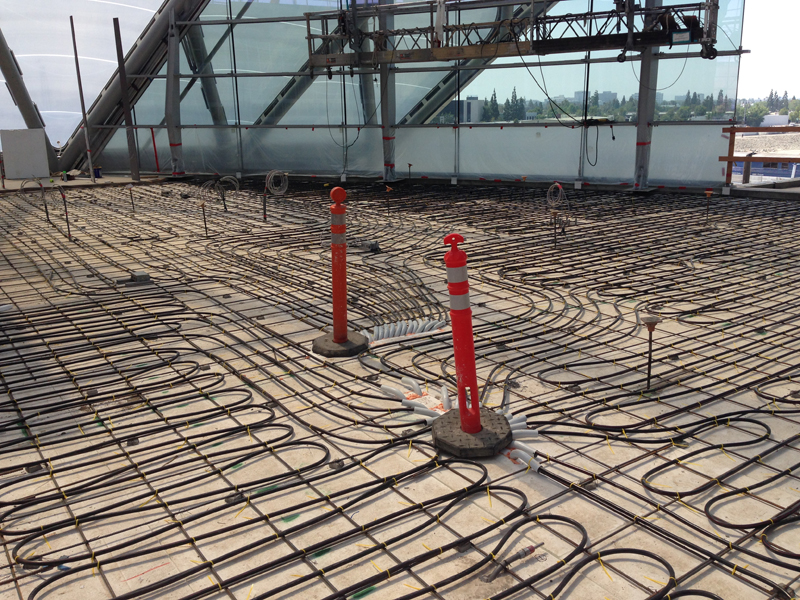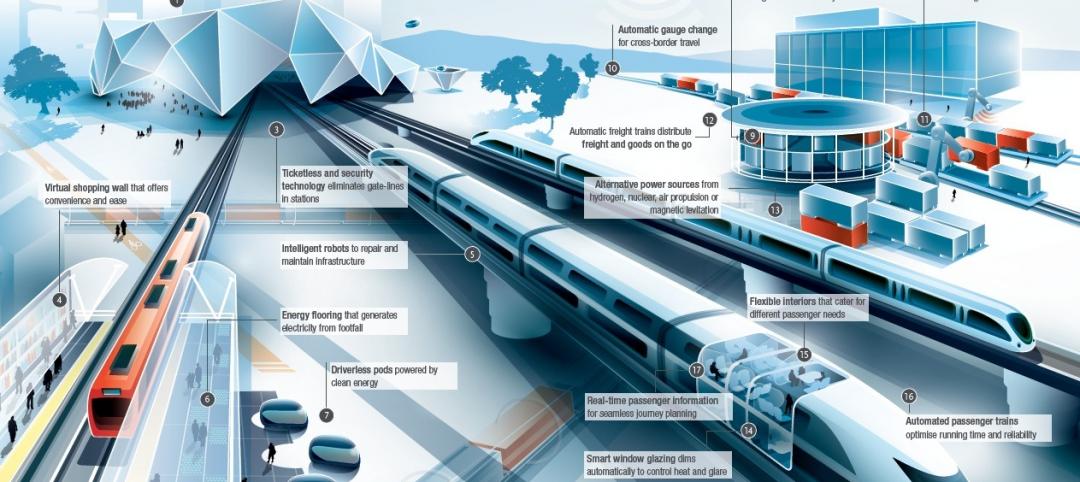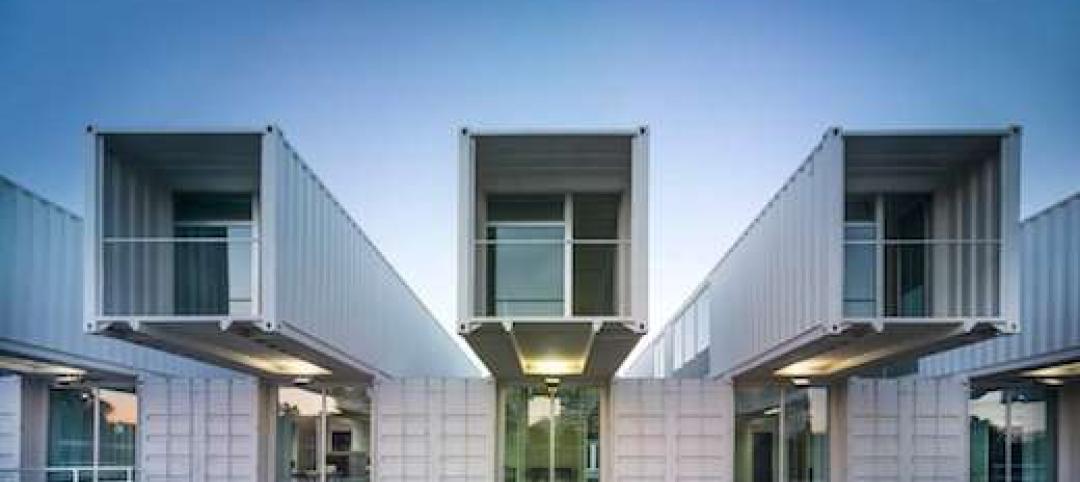The Anaheim Regional Transportation Intermodal Center (ARTIC) is the Grand Central Station of the future. Centrally located in Orange County, California, ARTIC provides transportation service for three million local residents as well as 40 million annual visitors.
A LEED Platinum-certified building, the structure is 67,000 square feet with three levels, connecting people to a variety of transit options as well as entertainment, dining and retail locations.
“The ARTIC station is pretty monumental for the future,” said Paul Redgate, Pipe Fitting Superintendent for California Comfort Systems in San Diego. “It has multiple resources—a bus station, large parking facility for car pools. It’s the first of the high-speed rail stations that has been built today. The project itself was high profile for the city of Anaheim, much different than a typical install.”
ARTIC’s unique architecture includes a large number of windows and a dome-shaped structure, which results in high solar gains. Due to ARTIC’s unique architecture and size, controlling the climate inside the building with a conventional forced-air system would have been nearly impossible. Instead, HVAC designers for the project chose to implement a radiant heating and cooling system. Radiant cooling allows instantaneous removal of heat through absorption. Installing ViegaPEX™ Barrier tubing at tightly spaced increments (6 inches on-center) allows it to be within two inches of the finished surface floor, which gave the engineer the ability to immediately remove the solar sensible gain. For the ARTIC project, the cooling capacity ranges up to 40 btuh/sq. ft. This provides an energy savings of 34 percent over ASHRAE 90.1-2007.
“We installed 44,000 feet of in-slab heating and cooling pipe, 18 manifolds and 12 pumps,” Redgate said. “It was pretty large. This was our first radiant project of this size. We’ve done some smaller stuff but nothing on this scale.”
The ARTIC project marked California Comfort Systems’ first radiant heating and cooling project with Viega systems. It was also the first time the company worked hand-in-hand with Viega for the design of a project.
“From start to finish, from inception of the design to the commissioning, Viega was there by our side,” Redgate said. “Viega’s involvement was priceless; they didn’t just hand us the package and walk away. To have them out there all the way through to the end of the project was probably the best overall. And we still beat the industry average by 25 percent on the install.”
Viega offers radiant heating and cooling solutions that are easy to install. With simple connections and engineered system designs, Viega makes radiant heating and cooling projects easy, regardless of the project size. For more complicated, large-scale projects where the installers may not be totally confident, Viega offers training and assistance from start to finish.
“I can’t express enough how impressed I was with these guys who were paying attention to our project,” Redgate said. “Viega has a great team of people that are very passionate about their product.”
For more information, visit www.viega.us.
Related Stories
| Jun 30, 2014
Research finds continued growth of design-build throughout United States
New research findings indicate that for the first time more than half of projects above $10 million are being completed through design-build project delivery.
| Jun 30, 2014
Arup's vision of the future of rail: driverless trains, maintenance drones, and automatic freight delivery
In its Future of Rail 2050 report, Arup reveals a vision of the future of rail travel in light of trends such as urban population growth, climate change, and emerging technologies.
| Jun 18, 2014
Arup uses 3D printing to fabricate one-of-a-kind structural steel components
The firm's research shows that 3D printing has the potential to reduce costs, cut waste, and slash the carbon footprint of the construction sector.
| Jun 12, 2014
Austrian university develops 'inflatable' concrete dome method
Constructing a concrete dome is a costly process, but this may change soon. A team from the Vienna University of Technology has developed a method that allows concrete domes to form with the use of air and steel cables instead of expensive, timber supporting structures.
| Jun 6, 2014
Shipping container ship terminal completed in Spain
In Seville, Spain, architectural firms Hombre de Piedra and Buró4 have designed and completed a cruise ship terminal out of used shipping containers.
| Jun 2, 2014
Parking structures group launches LEED-type program for parking garages
The Green Parking Council, an affiliate of the International Parking Institute, has launched the Green Garage Certification program, the parking industry equivalent of LEED certification.
| Jun 2, 2014
SOM unveils plans for Miami transit hub
The elevated station will be a key portal within All Aboard Florida’s rail system, the nation's only privately owned, operated, and financed rail network.
| May 29, 2014
7 cost-effective ways to make U.S. infrastructure more resilient
Moving critical elements to higher ground and designing for longer lifespans are just some of the ways cities and governments can make infrastructure more resilient to natural disasters and climate change, writes Richard Cavallaro, President of Skanska USA Civil.
| May 20, 2014
Kinetic Architecture: New book explores innovations in active façades
The book, co-authored by Arup's Russell Fortmeyer, illustrates the various ways architects, consultants, and engineers approach energy and comfort by manipulating air, water, and light through the layers of passive and active building envelope systems.
| May 19, 2014
What can architects learn from nature’s 3.8 billion years of experience?
In a new report, HOK and Biomimicry 3.8 partnered to study how lessons from the temperate broadleaf forest biome, which houses many of the world’s largest population centers, can inform the design of the built environment.


















